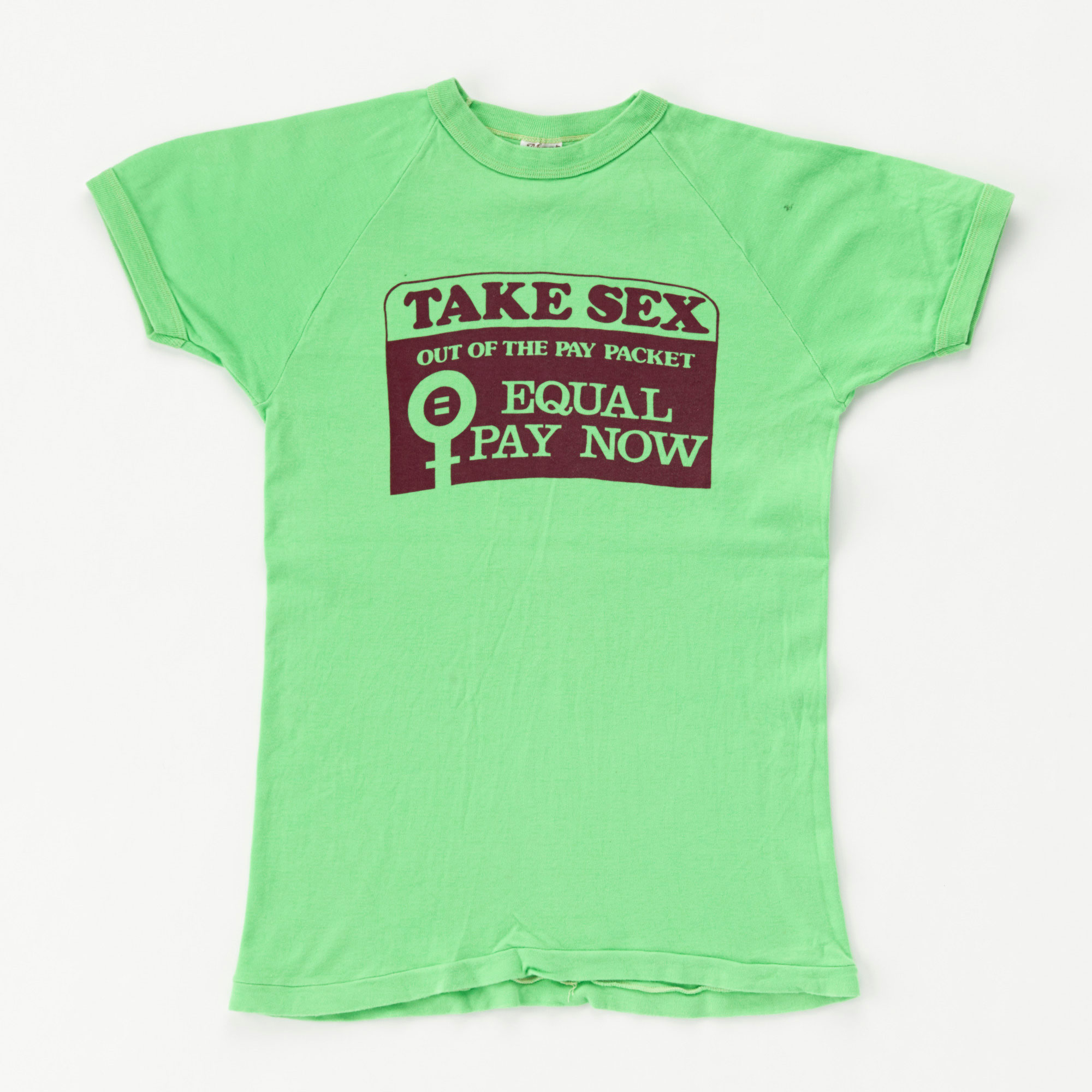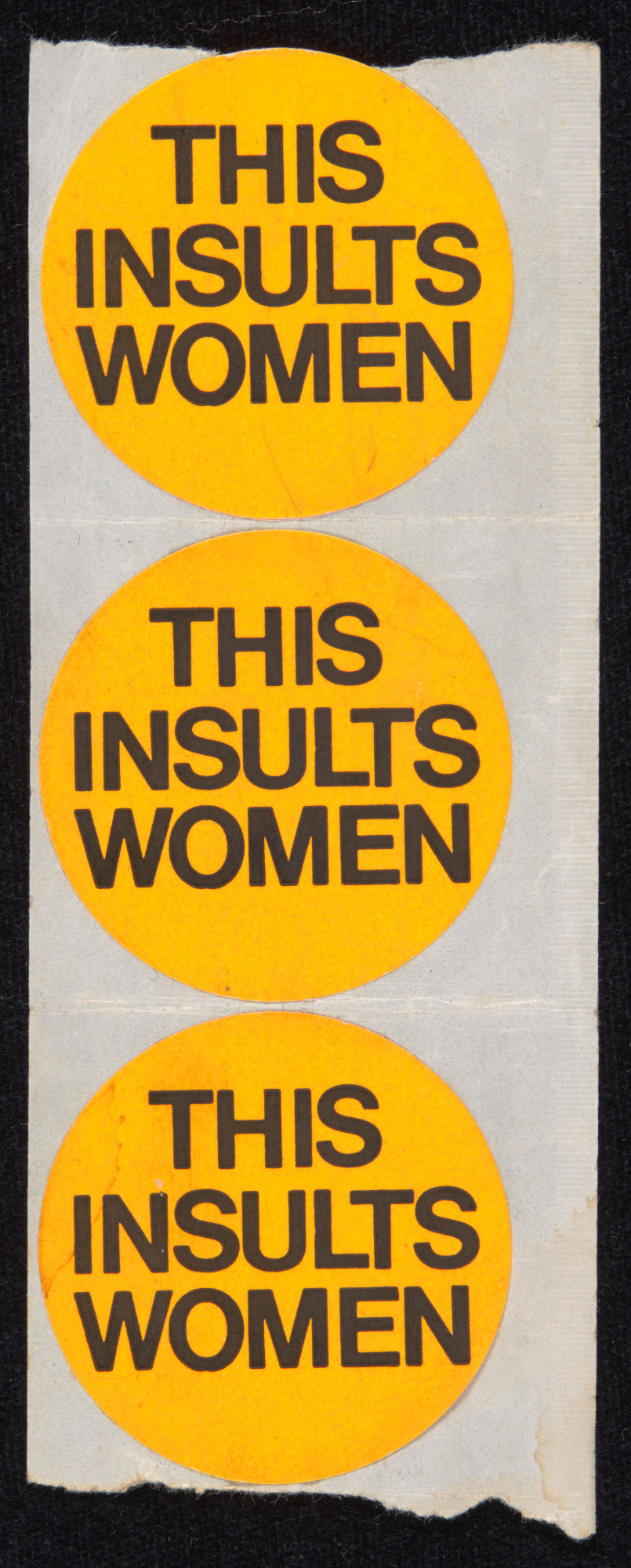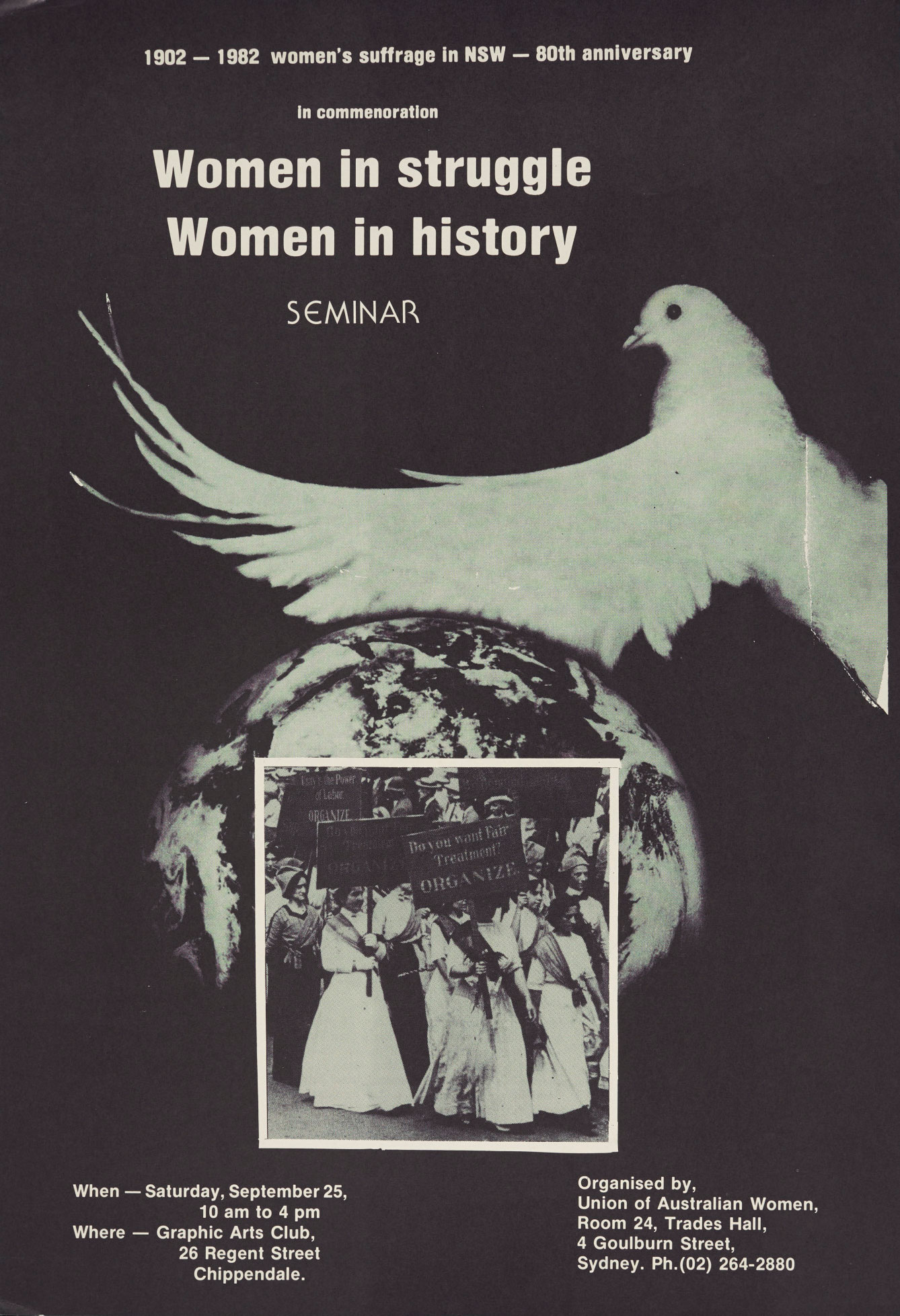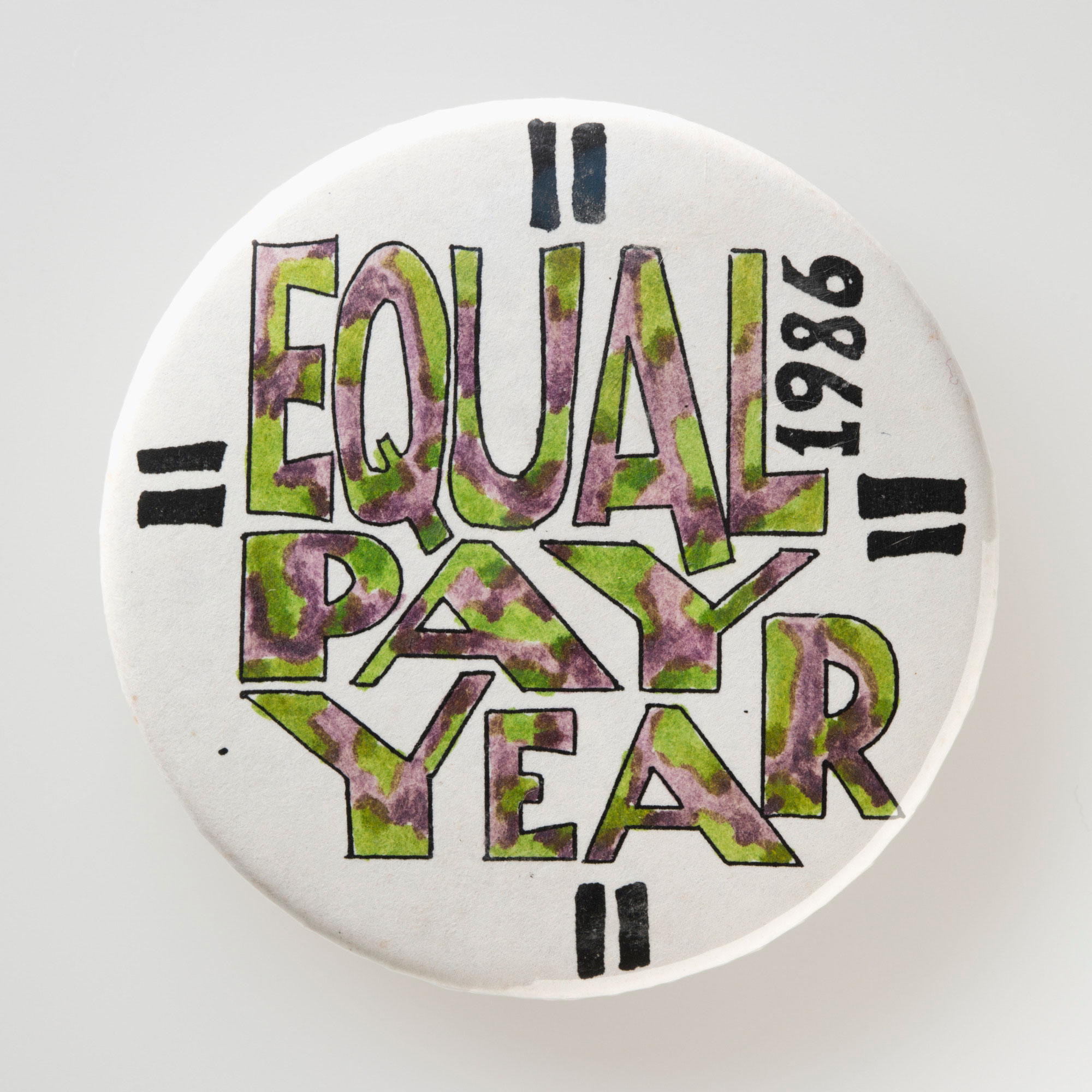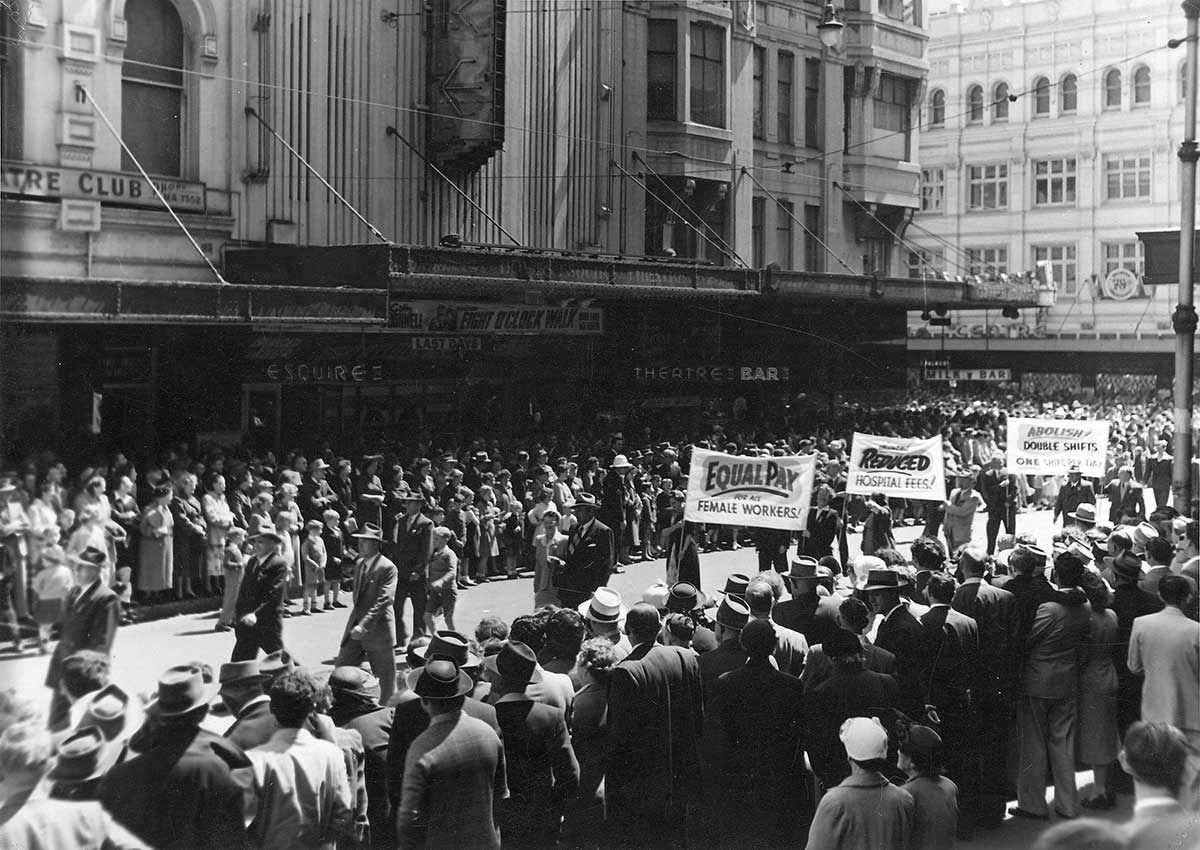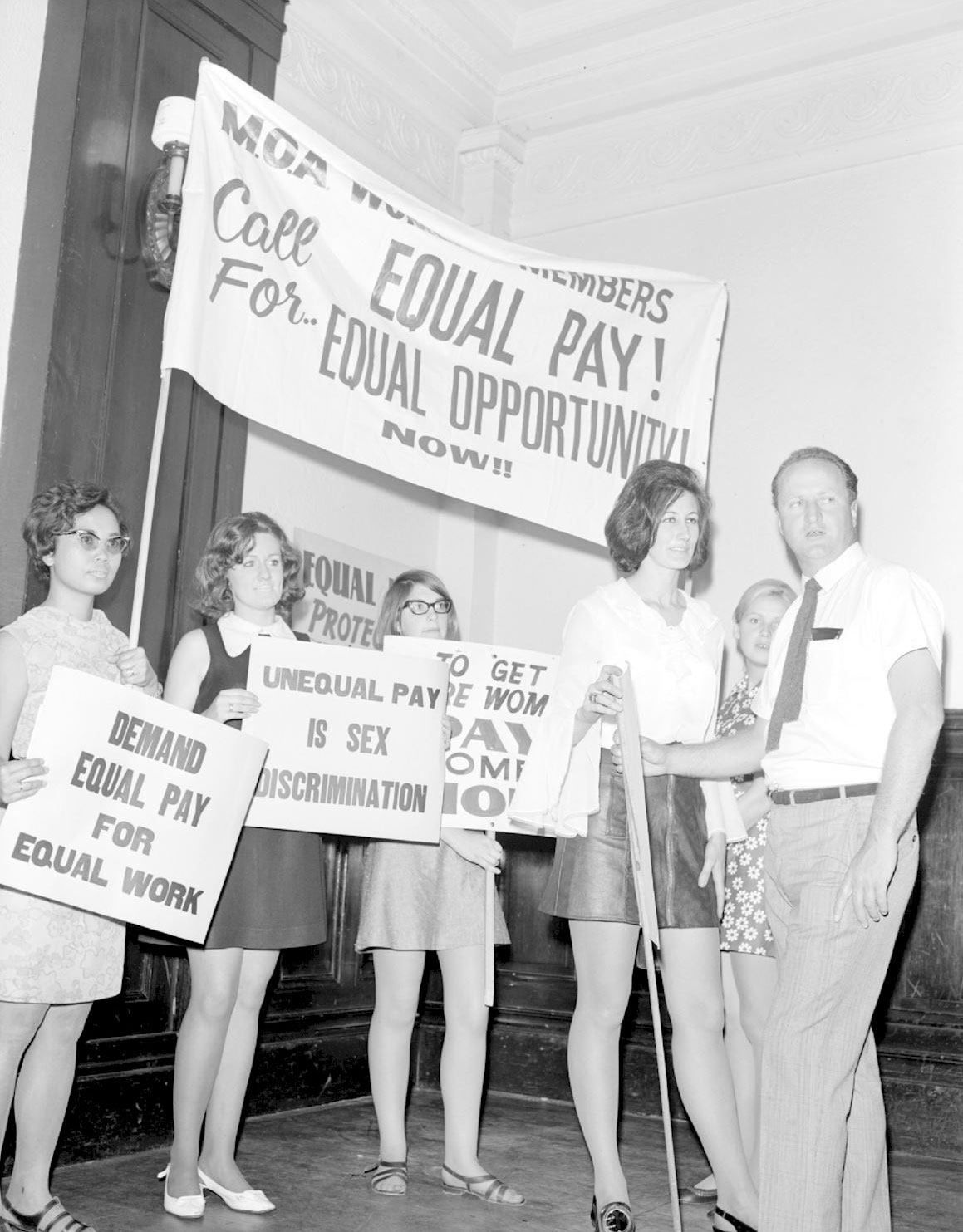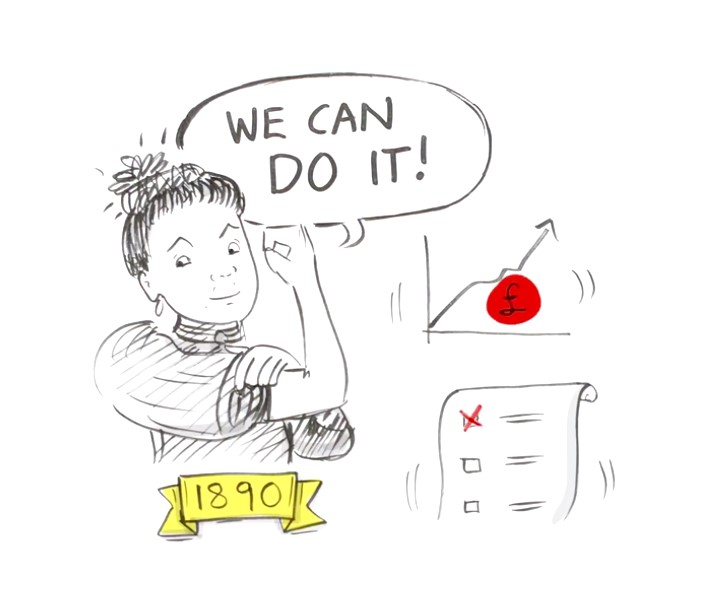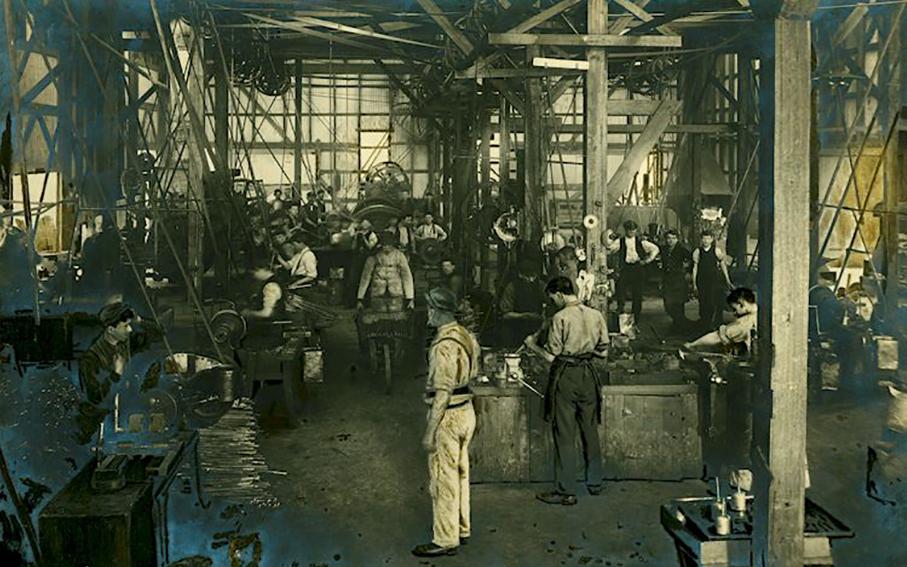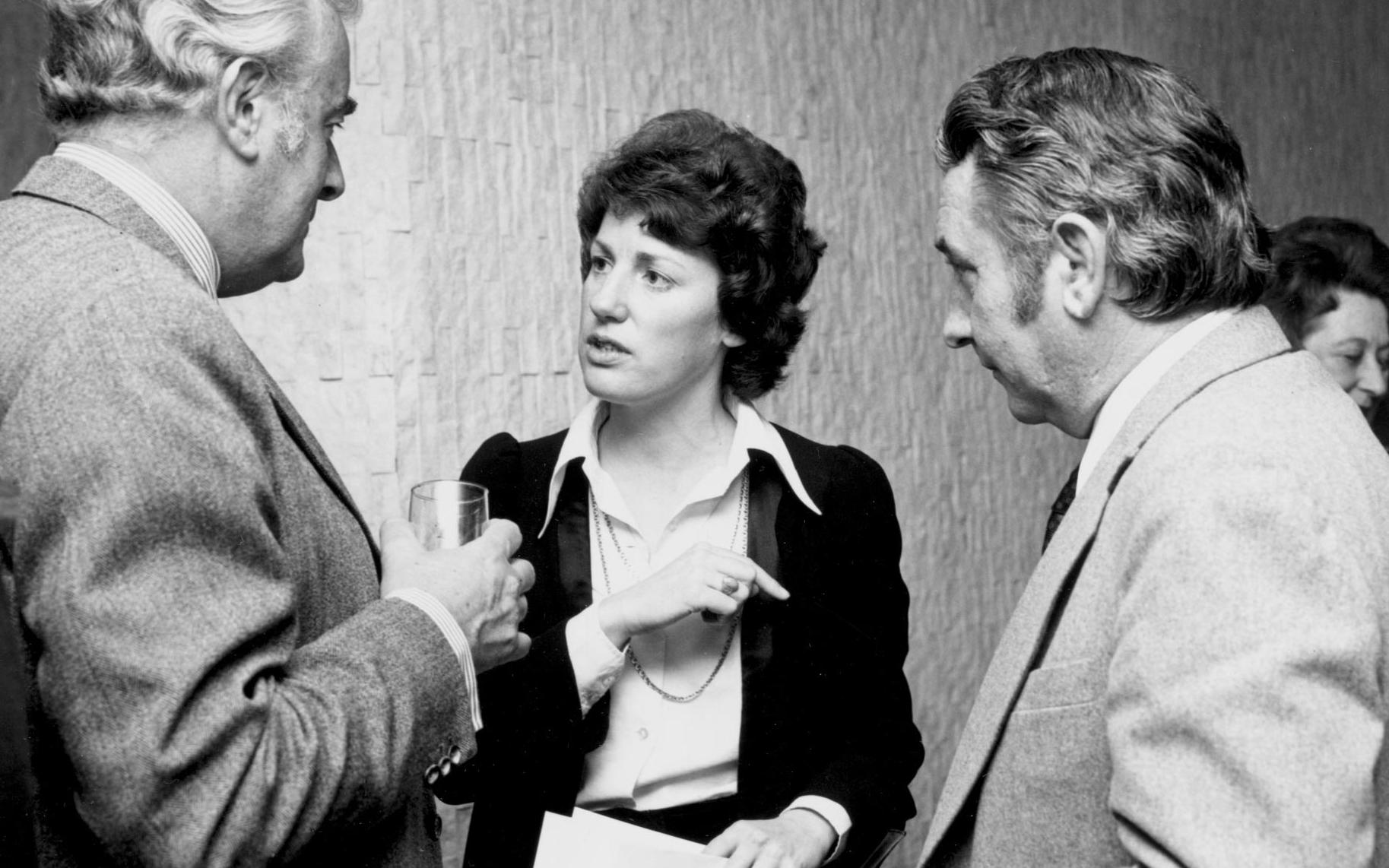Wage equality
1972: Equal pay for men and women
Wage equality
1972: Equal pay for men and women
In a snapshot
Women fought to be paid the same wages as male workers from the early 1900s. But it was not until 1972 that the Australian Conciliation and Arbitration Commission (ACAC) granted women equal pay for work of equal value. This was an important step towards equality between the sexes. However the average income of Australian women is still less than the male average.
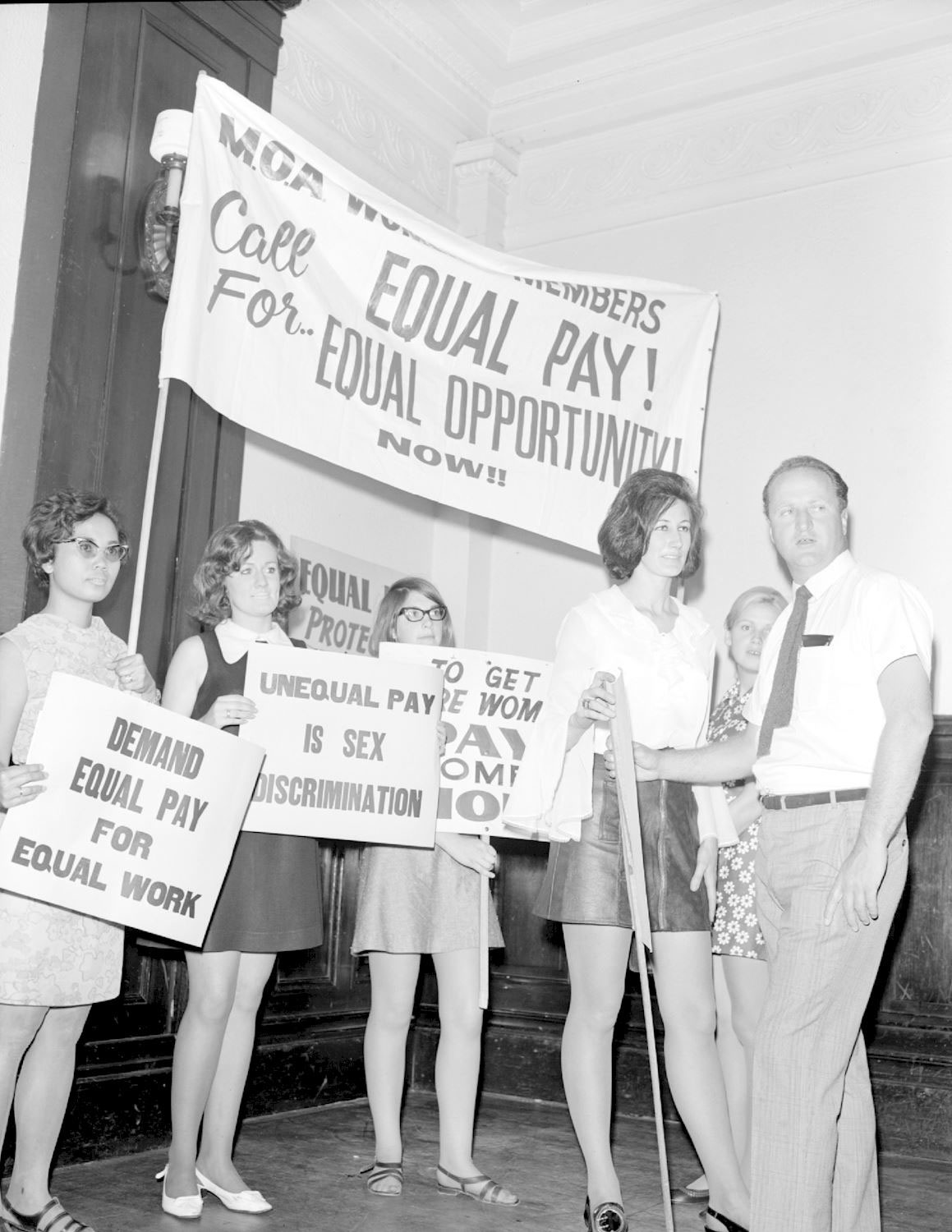
 Can you find out?
Can you find out?
1. Before the 1970s what did women in paid work usually have to do when they got married?
2. How did the 1972 decision change women’s wages in Australia?
3. What was the wage gap between men and women in 2012?
How were women workers treated before the 1970s?
During the Second World War (1939–45) many Australian women joined the workforce. Men had gone overseas to serve, so women filled their roles on farms and in factories and offices. These women were often paid two-thirds (or even less) of the wages that men were paid for the same work. Women were also usually forced to resign from their jobs when they married.
Women fought for better pay. In 1943 their lobbying led the Australian Government to grant women 75 per cent of the male wage for performing the same job. But after the war when men returned from serving, many women left the workforce or had to return to lower paying jobs.
Some countries legislated for equal pay for men and women in the 1940s: France in 1946 and Germany in 1949. Also, in 1951 and 1954, the United Nations called for all member countries to legislate for wage equality.
Both men and women in Australia took part in protests calling on the Australian Government to make equal pay the law.
Research task
Look at this t-shirt, which is a part of the Museum’s collection, and read the text underneath it:
(a) When was the Women’s Electoral Lobby set up?
(b) What kinds of changes were the Women’s Electoral Lobby campaigning for?
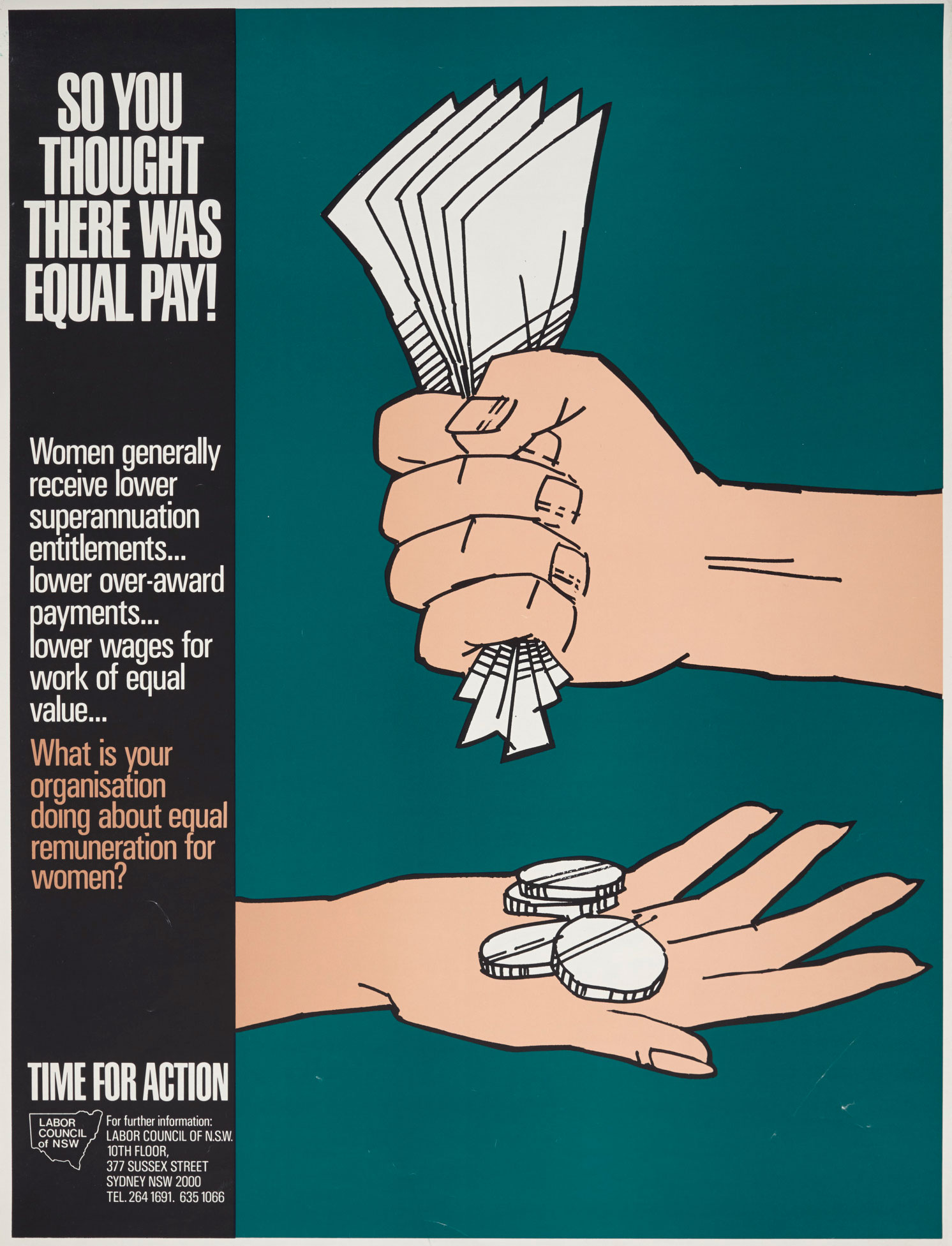
‘The principle of “equal pay for work of equal value” will be applied to all awards of the Commission. By “equal pay for work of equal value” we mean the fixation of award wage rates by a consideration of the work performed irrespective of the sex of the worker.’
What changes were made in 1969?
Pressure from protesters and trade unions increased in the 1960s. In 1969 the Australian Conciliation and Arbitration Commission (ACAC), the organisation that set wages, raised the female wage to 85 per cent of the male wage. Men were still paid more because it was believed that men needed extra money to provide for their families.
As part of this decision, some women were granted equal pay, but only if they were doing exactly the same work as men in traditionally male jobs. Most women did not work in these types of jobs.
Research task
In 1984 the Australian Parliament passed the Sex Discrimination Act. How did this legislation help to further improve women’s rights at work?
How was equal pay made law in 1972?
Trade unions continued to argue for equal pay, and in 1972 the newly elected Whitlam Labor government also supported equal pay. Because of this political pressure the Australian Conciliation and Arbitration Commission reviewed its 1969 decision.
In 1972 the Commission ruled that women and men who did similar work with similar value would be given the same pay. This meant that women didn’t have to prove that they were doing exactly the same work as men, but that their work had a similar value in society as traditionally male jobs.
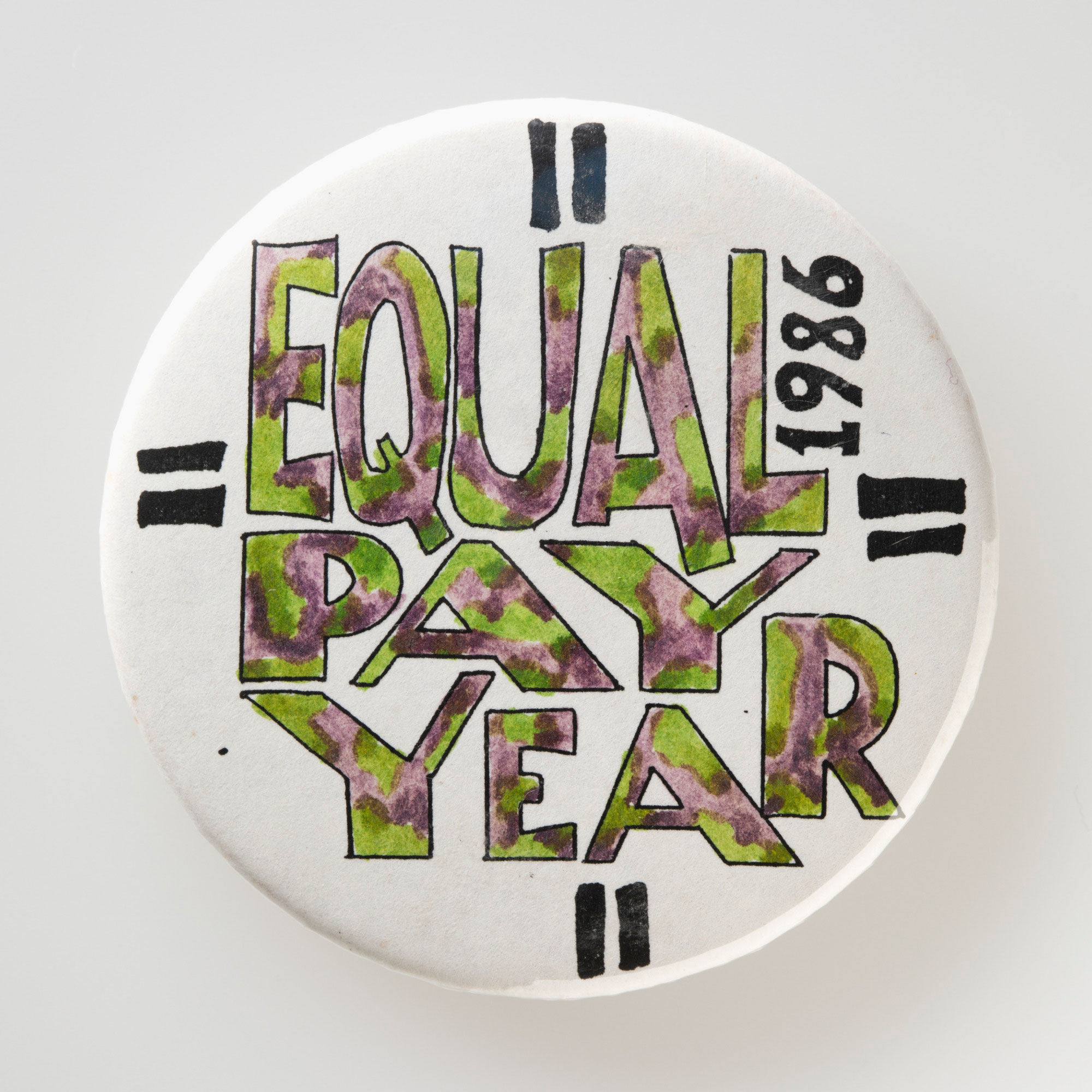
Has equal pay been achieved?
The 1972 decision was an important step towards equality between men and women in the workforce, but today there is still a wage gap between their average earnings. In 2012 Australian women still earned about 17 per cent less than the average male wage.
Read a longer version of this Defining Moment on the National Museum of Australia’s website.
 What did you learn?
What did you learn?
1. Before the 1970s what did women who were in paid work usually have to do when they got married?
2. How did the 1972 decision change women’s wages in Australia?
3. What was the wage gap between men and women in 2012?







